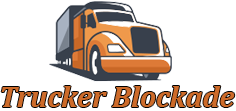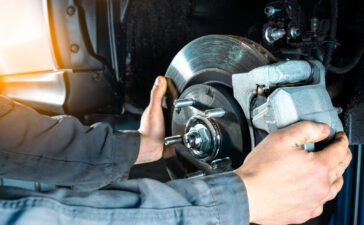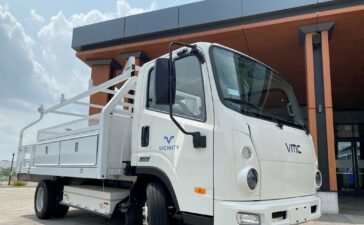The fifth generation of the Freightliner Cascadia has been introduced, featuring new Detroit Assurance safety capabilities, a cleaner electrical architecture, and aero improvements said to improve fuel economy by 1.9%.
Since the truck’s introduction in 2007, Daimler Truck North America (DTNA) has sold more than 1 million Freightliner Cascadias across the four generations that preceded this fifth-gen version. The truck has been so successful, according to Mary Aufdemberg, general manager, product strategy and market development with DTNA, that it has helped the brand grow its presence among small fleets, allowing Freightliner to shed its mega-fleet-truck image.

“They see they can make money with our product,” Aufdemberg said, speaking of small fleets and owner-operators. “Drivers love the comfort it delivers, and they appreciate the safety it delivers.”
Because customer feedback about driver comfort continues to be positive, DTNA chose to leave the interior largely untouched with the fifth-gen Cascadia.
An exception is the introduction of the Euro-styled electronic parking brake buttons. Easier to push than traditional buttons, LED lights also notify the driver if the brakes are engaged. The parking brake will also automatically be applied if the driver attempts to leave the seat without first setting it, to prevent rollaways and injury.
Greg Treinen, DTNA’s vice-president of on-highway market development, said the updated model is designed entirely around safety, efficiency and profitability.
“We feel we’ve hit the mark in those three spaces,” he said when introducing the truck to the trade press. A key enabler for many of the updates is a new electrical architecture, which cleans up the space behind the dash while also removing any air lines previously housed there. Treinen said the result is a quieter ride and easier access to wiring behind the dash.

Improved aerodynamics
Miranda Richardson, on-highway product marketing manager, highlighted subtle tweaks made to the front end of the fifth-gen Cascadia, which collectively improve fuel economy by about 1.9%. That’s on top of the 35% improvement seen since the model was first introduced in 2007.
Air ducts have been introduced to the front bumper to “help guide air around the truck and out through the wheel well,” Richardson explained. “That’s a big place for drag that we’re really trying to eliminate.”
The air ducts have the added benefit of helping to maintain brake temperature by directing air flow to areas where brakes are susceptible to heat buildup.
The air dam has been updated to provide greater ground clearance. Its job is to protect components underneath the truck body while also keeping air from interfering with those components. It’s a three-piece design, which Richardson said is more durable than previous versions thanks to snap enclosures that make it easy to snap the dam back into place if it is removed. This also allows drivers and technicians to easily remove the dam and access components behind it. If a section breaks, just one of the three panels is required for a repair and the new design protects the actual bumper from damage.
That new Max Aero bumper and the hood are separated by a new hood-to-bumper seal.
“What this does is help keep air from getting up under the hood,” Richardson noted. “Now, with the two pieces — on the top and bottom — it helps with that wear and tear of opening the hood as well.”
The grille features a new design, with optional matte silver accents. The hood shape has also been slightly modified to better direct air up over the windshield and around the truck sides. It also was redesigned to accommodate new dual-stage “intelligent LED” headlights. What makes them so smart? They have de-icing and defogging capabilities to maintain visibility in all weather conditions – fog lights no longer required.
Richardson said they offer 30% better visibility than the previous headlights and provide a broader 45-degree light pattern. They also automatically switch between high- and low-beam operation without driver input.
Intelligent braking
The fifth-gen Cascadia comes with a new Intelligent Braking Control System (IBCS) enabled by brake-by-wire technology and related wheel speed sensors and a chassis-mounted ECU to better control acceleration and braking.
A new feature is Comfort Braking, which evens brake force applications to reduce lining wear and extend brake pad life. It also allows for Endurance Braking, which blends the engine brake with the service brakes when the brake pedal is applied, even when the engine brake is turned off.
This, too, will extend brake life, DTNA officials said. The engine braking is so subtle I could barely hear it when driving the fifth-gen Cascadia on the American Center for Mobility track near Detroit during a preview of the new truck.

New safety features
Some of the most significant enhancements available in the fifth-gen Cascadia come from an updated Detroit Assurance suite of active safety systems. These are enabled by a new long-range radar, four new short-range radars, an upgraded camera and improved computing power to make it all work. Among the highlights:
Active Brake Assist 6 (ABA6) now detects vehicles stopped at odd angles, including vehicles in curves or those straddling multiple lanes. When necessary, the brakes will be engaged to prevent piling into a stopped vehicle. ABA6 also now recognizes stationary pedestrians, not just those in motion as was the case previously.
Active Lane Assist 2 (ALA2) is a new feature, which provides countersteering when the truck drifts or attempts to enter an already occupied lane.
Attentive Driver Protection, available when Lake Keep Assist is on, can alert a driver who is no longer engaged with the steering wheel. If no response is received to in-cab alerts, the system will keep the truck centered in its lane, slow it down to a stop and apply the hazard lights. The truck’s doors will be unlocked and the interior dome light turned on so help can reach an incapacitated driver.
Side Guard Assist 2 (SGA2) utilizes those short-range radars to alert the driver to objects along the entire lengths of the entire tractor-trailer unit, on both the driver and passenger sides.
Factory installed camera mirrors

Freightliner has also taken Stoneridge’s popular MirrorEye mirror camera system (MCS) and made it available as a factory install, with several upgrades that make it its own. The camera arms have been optimized for improved integration, Richardson said, featuring breakaway capabilities so they can be snapped back into place if impacted.
The camera lenses and the in-cab displays have infrared capabilities, allowing them to adjust to light conditions seamlessly. Driving through a darkened tunnel, visibility on the monitors was superior to the traditional mirrors. A new hydrophobic coating is said to repel water and contaminants to keep the lens clean.
Three in-cab displays provide excellent visibility along the full trailer as well as the passenger-side blind spot. All the controls have been integrated into the door control module for a cleaner install. Lines on the in-cab display indicate the end of the trailer, and the camera pans with the trailer’s movement to provide greater visibility while cornering. I backed up to a cone and determined the red line denoting the rear of the trailer, something that appeared deceiving at first glance, was ultimately true.
Any trucks coming with a factory-installed MirrorCam system will still arrive with traditional mirrors.
Detroit Connect updated
DTNA also updated its Detroit Connect Portal, giving fleets new capabilities including remote lock/unlock. Introduced in direct response to customer feedback, the new feature allows a fleet to lock or unlock the door of any connected vehicle through the portal.
Geofencing has also been introduced, so fleets can track when a truck enters or leaves a specific site. It could be a truck terminal, or a shipper yard where equipment detention time has been problematic, or maybe a repair center.
A new video capture feature provides fleet managers with event video in near real-time. And the number of parameter updates that can be conducted remotely has grown from seven, to more than 50.
The industry got its first look at the fifth generation Cascadia at the American Trucking Associations’ Management Conference & Exhibition. Production is set to begin mid next year.







